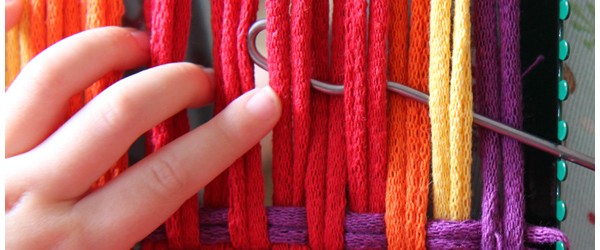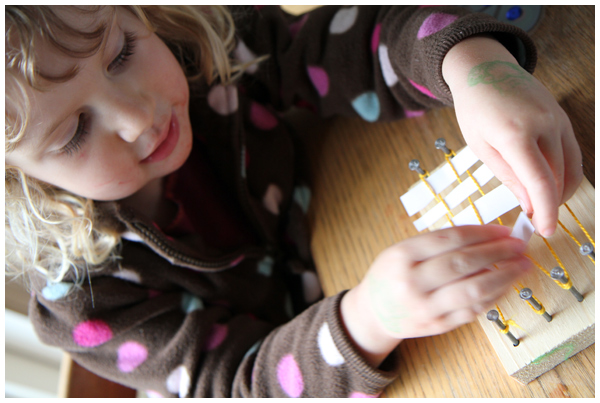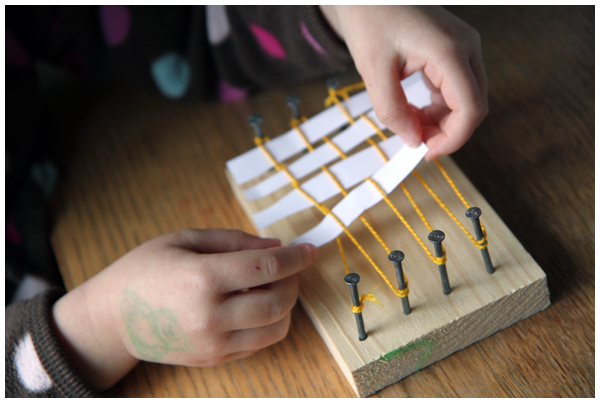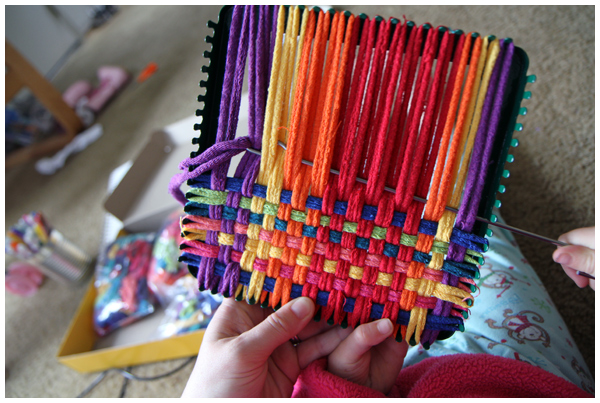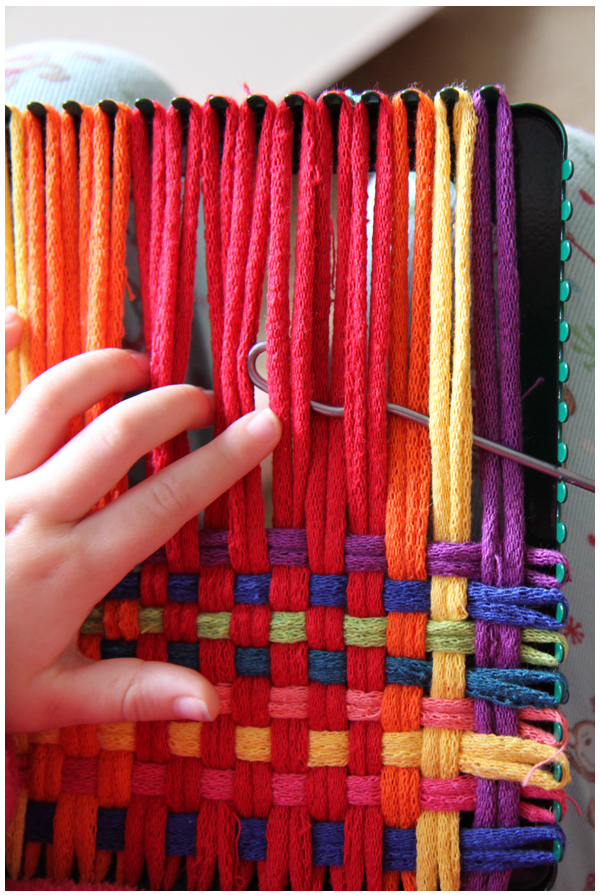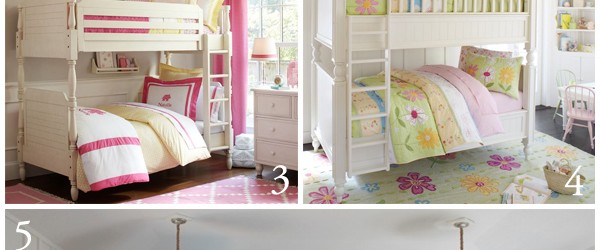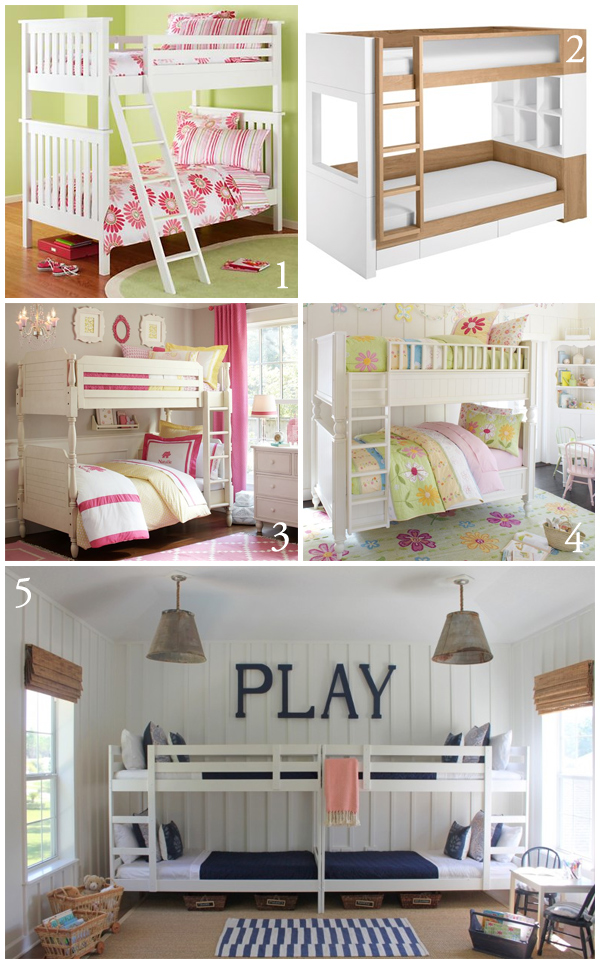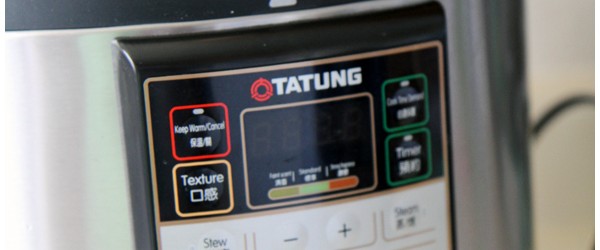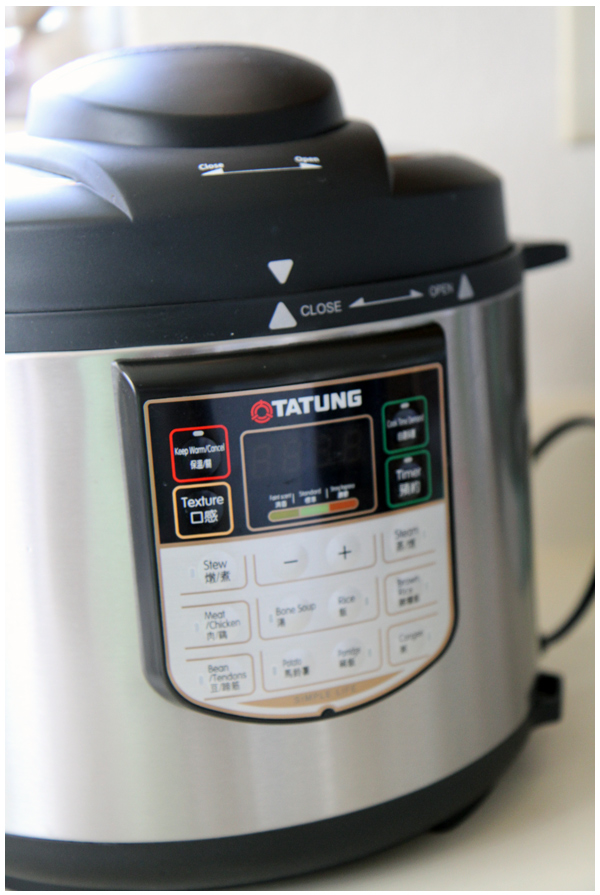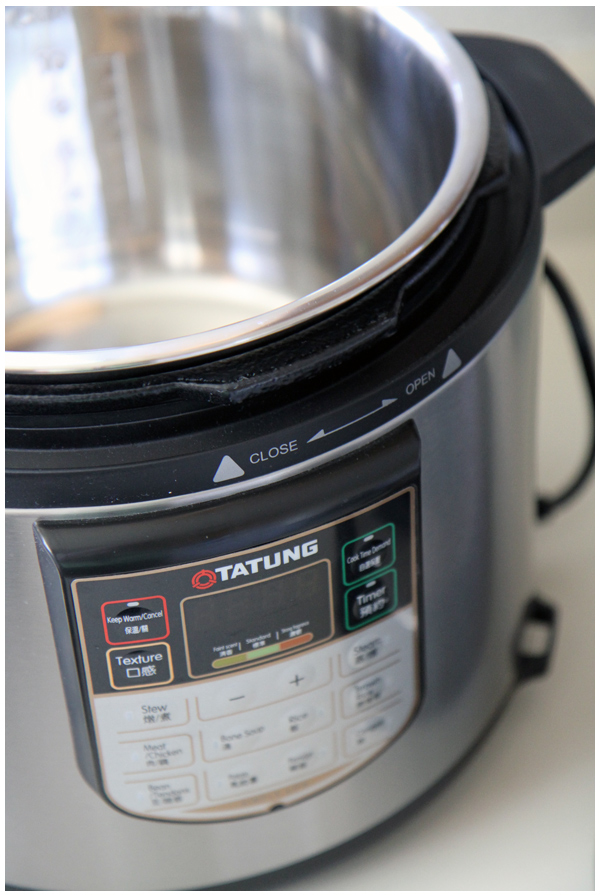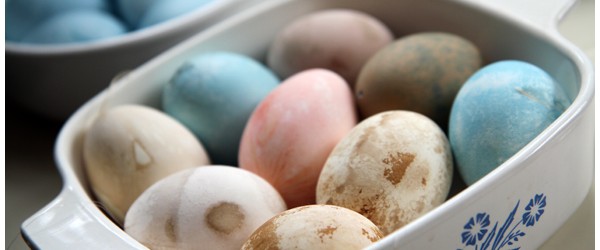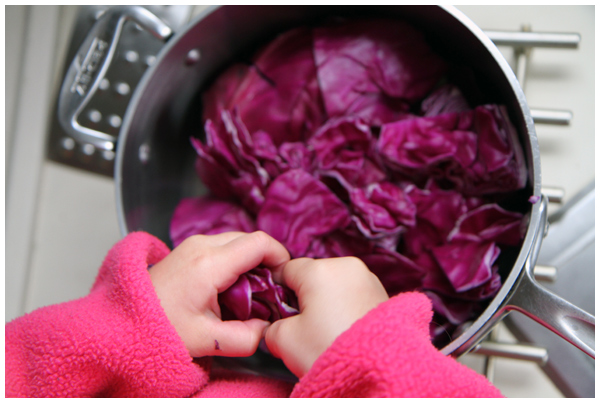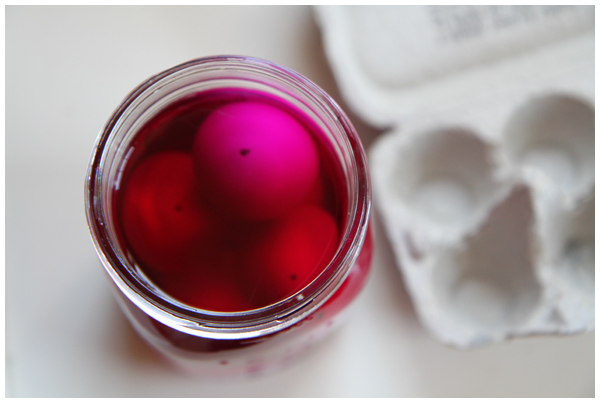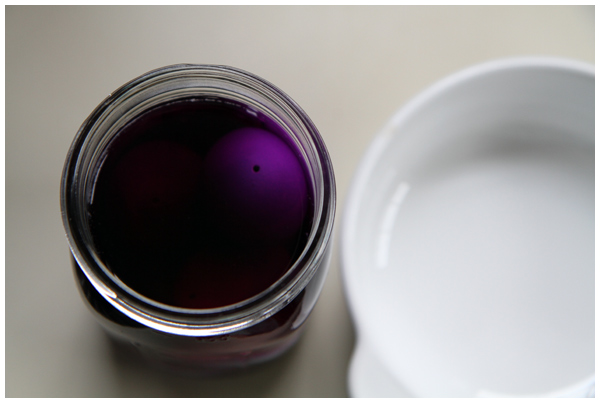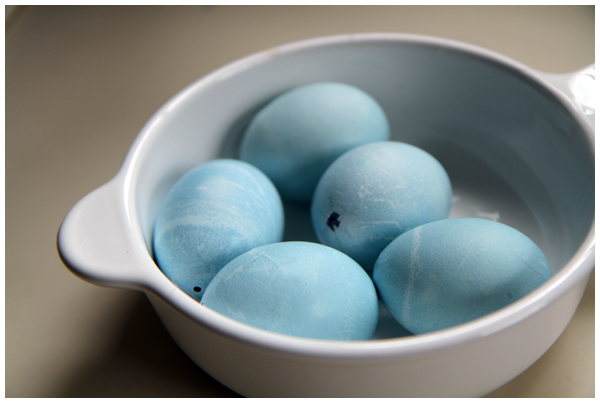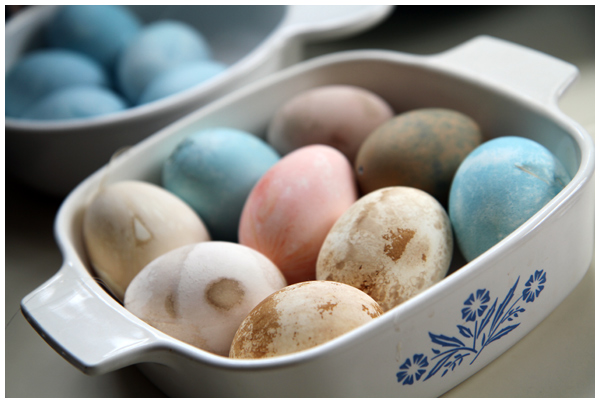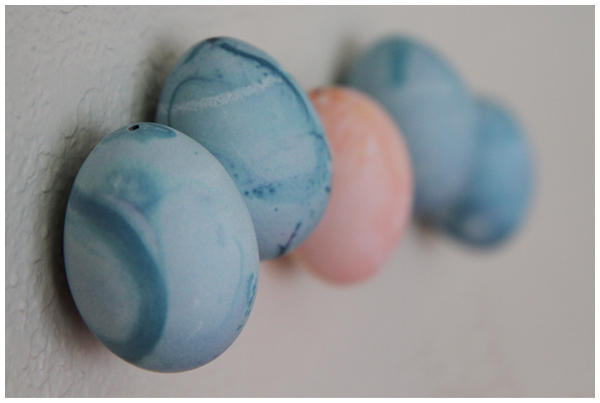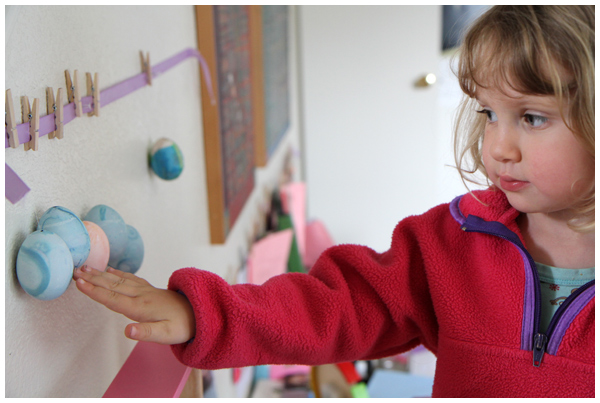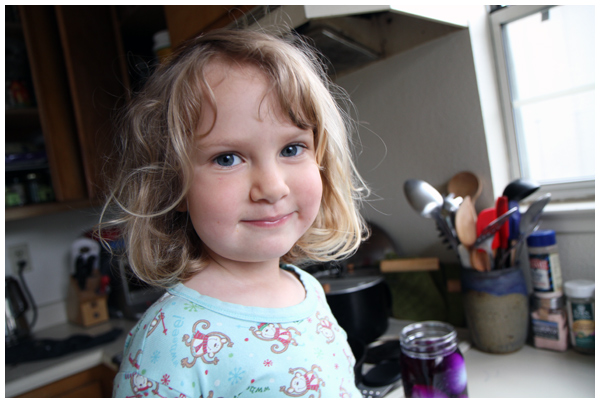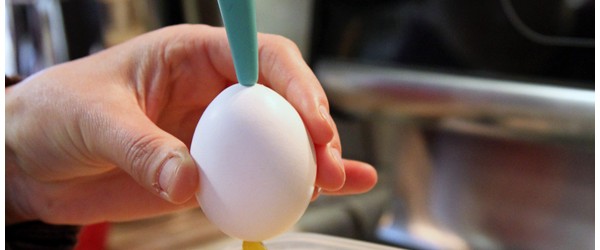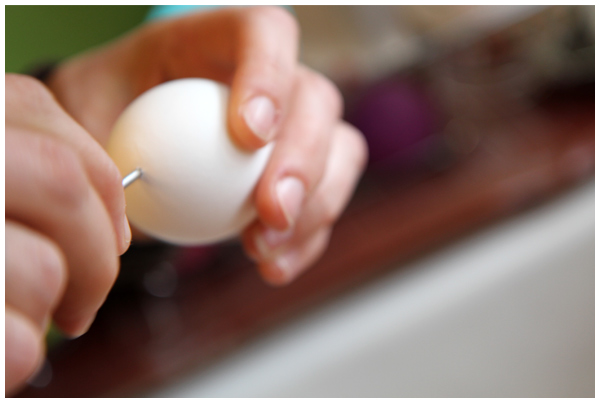Our daughter recently expressed an interest in learning to weave. (Oh, how we love a new art project!) As a child, I took weaving classes and even owned a full-sized loom on which to practice. I know first hand how good it feels to weave something from scratch!
Our daughter first practiced weaving on a little handmade loom (made of nails and wood) using small slips of paper:
Practicing moving the paper over, under, over, under.
She then graduated to a sturdy metal potholder loom (made in the USA by Harrisville Designs who primarily manufactures full-sized looms). I particularly like this metal loom
because the loops stay on the metal hooks, instead of popping off the frame over and over again as they tend to do with plastic or wooden looms.
Our daughter has been steadily working away on holiday presents for the grandparents. I’ve found we can never start those handmade gifts too early, especially when it takes our four year old several weeks to complete one potholder!
Next up we’ll weave on a laploom or weaving frame. I have fantasies of owning a table loom (like the one I learned on as a girl!). We may need two though because I’m not sure how we’ll share. ;)
